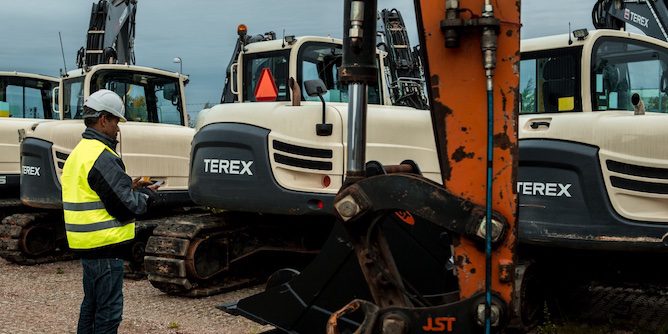

To develop an efficient fleet, you should connect the overall fleet management strategy with your organization’s strategic priorities. The strategy must be considered as part of your organization’s overall approach to its asset management.
For the purpose of this blog post, we consider a fleet as your organization’s off-highway vehicles, trucks, heavy equipment, and other machinery. Here you can see how Trackunit Manager can map and track your entire fleet. Also, with Trackunit Go, you will have your fleet at your fingertips.
Allowing your fleet to be in harmony with your organization is an essential part of fleet management. It is also important to consider that your fleet management strategy is agile so you can easily respond to changes when necessary, especially when managing important business issues or unpredictable circumstances.
This is where data comes in. With the use of connected telematics devices, you can monitor and track fleet performance and the status of fleet vehicles in real-time. This means that you can manage important information such as the use time of vehicles, average trip times, different geolocation information, vehicle breakdown information, identify inappropriate fuel consumption, and lifecycle system changes with your digital fleet management systems.
However, a solid, updated, and measurable fleet strategy is still a key aspect. Everything else regarding the procurement to the monitoring of your fleet comes from what you have outlined in your fleet strategy. If you can get that done correctly, then you are also planning to succeed.
Planning is everything. When you are writing your own fleet management strategy, a checklist of questions you should consider could include the following:

An important part of the strategy is defining the purpose of your fleet. Also, a good fleet management strategy should outline how the fleet fits in with the organization’s objectives as a whole. Here you can take a closer look at the what, how, and why. What is the organization doing? How is it doing it? Why is it doing it that particular way?
To answer these questions, a fleet manager should work across the whole organization to understand all the needs, requirements, uses, and various other aspects that play a part in how the organization and the different departments operate with the fleet.
It is also a good idea to consult relevant stakeholders when developing your fleet strategy so you know how to procure, manage and dispose of the assets. Also, suppose you develop your strategy without input from its users, like operators. In that case, there is a risk that your fleet may not meet users’ needs concerning fleet size, vehicle type, legislative changes, and different training requirements.
As an example, the CEO may view the fleet as an asset that needs to be optimized. The fleet manager may consider the fleet as a collection of vehicles that needs to be efficiently managed and maintained. Meanwhile, the operational manager may view the fleet as a vital part of the supply chain critical for transporting goods and services from one point to another.
Many organizations will have policies in relation to almost all of these factors. Therefore, an efficient fleet management strategy should outline what these policies are, how to find them and how the fleet will comply with these different policies.

Generally, there are two phases when you are developing your fleet strategy. The first phase examines all of your current vehicles to ensure their specifications are optimal for the specific functions they are supposed to perform. The second phase reviews your company purchasing policies so you can get better discounts. Here is a more detailed description of the two phases:
Phase 1
Examining maintenance records and forecasting maintenance needs is also an important element of good fleet management. Scheduling and tracking maintenance costs can identify how well your fleet management is working. You can also look at the strategy involving cycling your older vehicles, providing you with beneficial insights. Cycling too soon or too rarely can be costly in terms of fleet vehicle management, and more importantly, it can reduce your profits.
Phase 2
Reviewing company purchasing policies can give you considerable savings. It is important to understand the price differences when acquiring vehicles from a dealer versus acquiring vehicles directly from the factory. Fleet management also means that you should manage each vehicle as a component of your fleet and not just as an individual business purchase. Planning and acquiring vehicles directly from the factory can give you substantial savings.
By implementing telematics on your fleet and using software to leverage the collected data, you can make your processes more efficient and effective while simultaneously increasing the value of your construction equipment.
If you would like to get a demo of our fleet management software and get first-hand experience with the benefits of telematics, you can book a meeting with our experts here.
Suppose you do not measure your performance effectively. In that case, you will find it difficult to manage your fleet properly. There will be a high risk that your fleet management becomes an activity that operates in isolation from the rest of your organization. This could result in a reduction in service quality, and it could also be very costly for your organization if your fleet is not managed properly.

